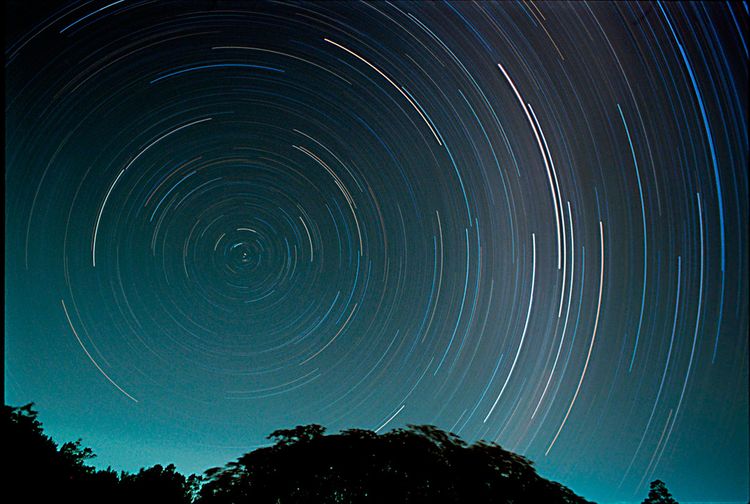
(Click for Einstein's fate!)
by John P. Pratt
14 Oct 2018
©2018 by John P. Pratt. All rights Reserved.
| 1. Scientific Method |
| 2. Question for Spherical-Earthers |
| 3. Question for Flat-Earthers |
| 4. Conclusion |
We live in an age of awakening! We are like teenagers who become aware that their parents do not know everything and in fact seem to be clearly wrong sometimes, even in their sincere beliefs. Teenage questioning appears to be a healthy, normal, maturing phase of life because it is an awakening to truth: indeed the parents do not know everything and are wrong a lot! So how can we tell when they (or teachers) are right and when they are wrong?
This article discusses a proposed route for teenagers and adults alike to find their way through the mazes of deception and misunderstandings in life to actually arrive at some semblance of truth. After the scientific method is presented as one possible help along the way, an example application about the shape of the earth is presented, along with a possible way to distinguish between them by asking each a question.
 |
When university professors begin to believe that they know to answers in their field of study, they can often become authoritarian. Instead of presenting their learning as theories to be tested, they are often presented as truth. But real science never believes it has arrived at truth! In fact, that is not even the goal of science.
Science seeks to understand reality in terms or theories or models which can always be improved in the light of new discoveries. Therefore, they never claim to be absolute truth. If instructors claim to have absolute truth, then they are not dealing with science, but rather with their belief or religion. Religion is indeed a field where truth is allowed to reside because it can claim revelation from a Creator, who is believed to know the truth!
The scientific method is the pattern that science uses to make progress toward understanding observations. The basics steps of this method are the following:
The Scientific Method
- Make an observation.
- Try to explain it.
- Use that explanation to predict the results of another observation.
- Compare the results of the new observation to the prediction.
- If the results are different from the prediction, then either reject the explanation as "falsified", or count that as a new observation and go back to step 2 and repeat the cycle as needed to explain new observations.
The observation could be simply noticing that the sun comes up every morning or it could be a carefully controlled experiment, designed to have only one variable. The explanation could either be simple or a long, complicated theory.
So far those two steps could be used in religion or fantasy or politics. It is the next steps which make it scientific. Science is based on its predictive value of future observations. That is, we can use the theories to predict how we could build an automobile or a computer and they will work as predicted!
If a theory fails to correctly predict the outcome of a new observation, then the theory can either be discarded or it can be modified to explain the unexpected outcome, as well as all other past observations, and then the new, improved theory can again be used to make yet another prediction. It is important that any observation used to create the theory cannot be used to help prove it true!
Now comes a crucial point! If the theory cannot predict the result of a future experiment or observation, then it is not science! It may be true, it just is not science if it cannot be tested by new observations. Volumes could be written about theories which claim to be scientific but have no predictive experiments to test them!
The bottom line here is that science never claims to have truth, because tomorrow there might be a new observation which could falsify the current theory! Thus, a scientific theory can be proven false, but never proven true!
Now let us turn to the example of the shape of the earth. In preparation for this article, many hours were spent looking at both sides, with the result that not one unbiased presentation was found. Each was presented by someone who was absolutely sure they had the answer and was intent on enlightening the other deluded viewpoint. In this article, every effort is being made to avoid such an authoritarian attitude. This article does not take sides but rather attempts to present a potentially falsifying question for each theory to explain. As of yet, no article or video was found in my research which answers either of these questions.
 |
This article has chosen what appears to this author as the best falsifying question posed to those believing in a spherical earth. Here "falsifying question" is used in the sense of the scientific method. It rests the burden of proof on the spherical-earthers to answer with a scientific theory to explain it. If it cannot be explained, then it becomes a possible killer question which could destroy the entire theory of a spherical earth.
The question is: "Why can we see farther across a large lake or sea than predicted by a spherical earth model?"
In all of the videos watched in preparing this article, the presenter jumped to the conclusion that the obvious answer is that the earth is flat, which is not scientific because that is just one explanation. But it is a good question that demands an answer! First, it must be established that the claim is indeed true. Second, in view of the abundance of astronomical data supporting a spherical earth, an alternate answer should be sought. In defense of flat earth proponents, however, it must be noted here that a valiant effort has been made on their part to explain much of the astronomical evidence.
To me the answer to this question at first appeared obvious and an article to explain it was begun on my part because none had been yet found. Again, the problem seemed to be that the spherical-earthers were so sure of themselves as not even to dignify the question with a response. That also is unscientific!
Because so many examples of being able to see too far had been given, it was accepted in my article that the observation was true and hence needed to be explained. Otherwise, surely someone would have pointed out the falsehood.
The equations of the curvature of the earth presented in the videos were again independently derived by myself and found to be accurate, so that did not seem to be the answer.
 |
Why should flat-earthers believe that result from an optics theory? One reason is that it also explains the apparent flattening of the sun as it rises or sets as due to differential refraction. The sun (or moon) no longer appears to be circular, but more elliptical and even being more flattened where it is closest to the horizon (see Figure 1). That observation needs to be explained also.
But alas, my best attempt at using that as an answer also did not work when calculations were made. Moreover, papers were found that took refraction into consideration, so my attempt at an easy answer was abandoned. Seeing a lighthouse on a distant shore is not the same as a sunrise, especially in the amount of differing densities of atmosphere traversed. Thus, to me it is a question that still needs to be answered by spherical-earthers.
 |
The question is: "When viewed from south of the equator, why do all visible stars appear to be rotating clockwise around a point in the sky due south?"
One operative word in that question is "clockwise" because north of the equator all of the stars seem to be rotating counterclockwise around a point in the sky which is due north. Flat-earth theory has attempted an explanation of the northern observation, but what about south of the equator? Figure 3 shows a photograph of the effect using an exposure of a few hours to record the apparent motion of the stars taken from Reunion Island in the Indian Ocean.
 |
Another way to state the challenge posed by this question to the flat earth theory is to note that if someone in Brazil had originated the flat earth theory, they could very well have created a model where the center of the sky is located directly over the south pole! They could draw an equally accurate map with Antarctica at the center and claim that there is no north pole of the earth. To me, this question is indeed a killer question which falsifies the entire flat earth theory!
The reader may want to take a moment to consider why the answer to this question is obvious to spherical-earthers: it is exactly what would be expected if the stars were all very distant and the earth were a rotating sphere. Make sure you see why the observed stellar rotation north of the equator appears to be opposite to that observed south of it.
The scientific method is wonderful! It has led to many wonderful discoveries and ways to predict how future inventions could work. As long as science remains questioning and open to new experiments which could disprove or improve old theories with even better predictions, then scientists know their place. Once they become authoritative and insist that their theory is indeed true, then they close the door to further learning and can actually be enemies of truth as Einstein said. If students come away believing that everything is understood, they can be discouraged from asking questions, thinking that all is known. May we all become childlike, filled with questions about the world around us and ever seeking to better learn the secrets of the creation!